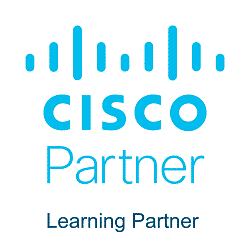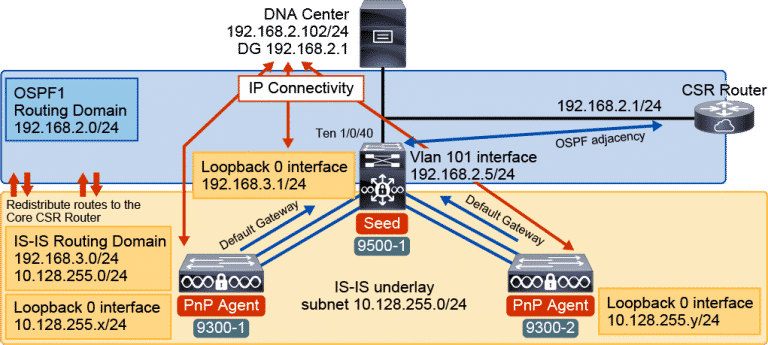ENC9K – Implementing Cisco Catalyst 9000 Switches

The ENC9K Implementing Cisco Catalyst 9000 Switches course is designed for participants who want to gain a deeper understanding of the architecture, functionality, and implementation of the Cisco Catalyst 9000 switching platform. Using a hands-on approach, the course focuses on the capabilities of the Cisco IOS XE platform and centralized device management through Cisco DNA Center. Participants will learn how to use Cisco Catalyst 9000 family switches to enable Software Defined Access (SD-Access) and implement end-to-end security and automation.
Course Objectives
The following is a summary of the main objectives of the ENC9K Implementing Cisco Catalyst 9000 Switches Course :
- Understand the architecture and capabilities of the Cisco Catalyst 9000 platform.
- Learn how to manage devices centrally through Cisco DNA Center.
- Use Cisco Catalyst 9000 switches for SD access and network automation.
- Ensure end-to-end security and network management.
- Develop operational skills with hands-on sessions on configuring and troubleshooting Catalyst 9000 switches.
- Explore advanced QoS features and their implementation on Cisco Catalyst 9000 switches.
- Learn about integrating Cisco Catalyst 9000 switches with cloud services.
- Gain insights into software-defined segmentation and policy enforcement using Cisco TrustSec.
Course Certification
This course helps you prepare to take the:
Cisco Enterprise Certifications.
Course Outline
- Introduction to QoS
- Converged Networks Review
- Understand QoS
- Describe Best-Effort and Integrated Services Models
- Describe the Differentiated Services Model
- Implement and Monitor QoS
- MQC Introductio
- Introducing Cisco Catalyst Series Switches
- Introducing Cisco Catalyst Platforms
- Introducing Cisco UADP ASIC .
- Cisco UADP Core Architecture
- Packet Walk with ASIC
- Cisco Open IOS XE
- Role of Cisco Catalyst Series Switches in Cisco DNA Architecture
- Cisco Catalyst Series Licensing
- Introducing Cisco Catalyst Series Switches
- Cisco Catalyst Product Overview
- Switch Models
- Cisco Catalyst Switch Uplink Modules
- Cisco Catalyst Series Switches Power Supplies, Stacking, and Stack Cables
- Enhanced Storage Options on Cisco Catalyst
- Cisco Catalyst Port Layouts
- Multi-Gigabit Ports
- Introducing Cisco Catalyst Series Switches
- Cisco Catalyst Product Overview
- Cisco Catalyst -Slot Modular Switch Chassis
- Cisco Catalyst -Slot Modular Switch Chassis
- Cisco Catalyst -Slot Modular Switch Chassis
- Cisco Catalyst Supervisor and Line Cards
- Power Supplies
- Cisco Catalyst High Availability Features
- Cisco Catalyst Architecture
- Cisco Catalyst Supervisor Uplinks and Uplink Redundancy
- Cisco Catalyst Power Redundancy Modes
- Cisco Catalyst Multigigabit Ports
- Introducing Cisco Catalyst Series Switches
- Cisco Catalyst Product Overview
- Cisco Catalyst -Q Series Switch
- Cisco Catalyst -Q Series Switch
- Cisco Catalyst -X Series Switch
- Cisco Catalyst Redundant Platinum Rated Power Supply
- Cisco Catalyst Modular Fans
- Cisco Catalyst Series RFID Switches
- Cisco Catalyst -Q Series G Architecture
- Cisco Catalyst -Q Series G Architecture
- Cisco Catalyst -X SeriesG Architecture
- Positioning Cisco Catalyst Series Switches
- Positioning Cisco Catalyst Series Switches
- Positioning Cisco Catalyst Series Switches
- Positioning Cisco Catalyst Series Switches
- Migrating from the Cisco Catalyst to Cisco Catalyst
- Migrating from the Cisco Catalyst E to the Cisco Catalyst
- Migrating from the Cisco Catalyst
- Examining Cisco Catalyst Series Switches Management Capabilities
- Cisco IOS Software Command-Line Interface
- Cisco Prime Infrastructure
- Cisco Application Policy Infrastructure Controller Enterprise Module
- Cisco DNA Center
- Onboard Cisco IOS XE Software Web User Interface GUI
- Simple Network Management Protocol
- Network Programmability Features
- Discover and Automate the Underlay Topology Using PnP Base Automation Service of Cisco DNA Center GUI
- Deploying Cisco Catalyst Series Switches in Cisco StackWise Virtual and SD-Access Fabric
- Cisco StackWise Virtual Topology in N-Tier Network Topology
- Deploying Cisco Catalyst Series in SD Access Fabric
- Describing New Features on Cisco Catalyst Series Switches
- Open IOS
- Software Upgrades, Backup, and Restore
- Graceful Insertion and Removal
- Perform GIR on Cisco Catalyst Series Switch
- New License Packaging Structure
- Cisco DNA Software Capabilities by Subscription
- Open IOS XE Containers and Hosted Applications
- Manage and Patch Cisco Catalyst Series Software Images Using Cisco DNA Center GUI and CLI Commands
- Describing Scale and Performance Features on Cisco Catalyst Series Switches
- Bandwidth Per Stack
- Uplinks
- Multigigabit Technology
- Flexible NetFlow
- Forwarding TCAM Resources, Flexible Lookup Tables Shared Across Cores, FlexTables
- Cisco Catalyst Series Flexible ASIC Templates
- Describing Security, QoS, and IoT Convergence Features on Cisco Catalyst Series Switches
- Group-Based Policy and Cisco TrustSec SGT for Wired and Wireless
- AES-MACsec Encryption
- FabricSec Encryption
- Encrypted Traffic Analytics
- Enable and Verify Encrypted Traffic Analytics
- Extend Security to Infrastructure with Trustworthy Systems
- QoS Features and Packet Walk
- Describe IoT Convergence Features on Cisco Catalyst Series Switches
- Configure Perpetual PoE and Fast PoE on the Cisco Catalyst Series Switch
- Describing Cloud and Automation Features on Cisco Catalyst Series Switches
- Cloud Hosting (Assurance Policy) and Cloud Connectivity
- Telemetry
- DevOps Toolkit
- NETCONF and YANG Management Model
- Cisco DNA Center and Cisco SD-Access Programmability
- High Availability Features
- Explore Switch Management Automation and Programmability
- Describing Cisco SD-Access Solution and Cisco Catalyst Series Switches
- Cisco SD-Access Solutions Fundamentals
- Role of Cisco Catalyst Series in the Cisco SD-Access Solution
- Cisco DNA Center Components and Architecture
- Cisco DNA Center Four Step Automation WorkFlow for SD-Access
- Deploy Cisco SD-Access Campus Fabric Using Cisco DNA Center Automation
- QoS Monitor
- Define Campus AutoQoS
- Define WAN AutoQoS
- Classification and Marking
- Classification and Marking Overview
- MQC for Classification and Marking
- NBAR for Classification
- Using QoS Preclassify
- Campus Classification and Marking
- Congestion Management
- Queuing Introduction
- Configure WFQ
- Configure CBWFQ and LLQ
- Configure Campus Congestion Management
- Congestion Avoidance
- Congestion Avoidance Introduction
- Configure Class-Based WRED
- Configure ECN
- Describe Campus-Based Congestion Avoidance
- Traffic Policing and Shaping
- Traffic Policing and Shaping Overview
- Configure Class-Based Policing
- Campus Policing
- Configure Class-Based Shaping
- Configure Class-Based Shaping on Frame Relay Interfaces
- Configure Frame Relay Voice-Adaptive Traffic Shaping and Fragmentation
- Link Efficiency Mechanisms
- Link Efficiency Mechanisms Overview
- Configure Class-Based Header Compression
- Configure LFI
- End-to-End QoS Deployment
- Apply Best Practices for QoS Policy Design
- End-to-End QoS Deployments
Laboratory Activities
- QoS Mechanisms
- IP SLA Setup and QoS Baseline Measurement
- Configuring QoS with Cisco AutoQoS
- Classification and Marking
- Classification and Marking Using MQC
- Using NBAR for Classification
- Configuring QoS Preclassify
- Campus Classification and Marking Using MQC
- Configuring Fair Queuing
- Configuring LLQ-CBWFQ
- Configuring Campus-Based Queuing Mechanisms
- WRED Traffic Profiles
- Configuring DSCP-Based WRED
- Configuring WTD Thresholds
- Configuring Class-Based Policing
- Configuring Class-Based Shaping
- Configuring Class-Based Header Compression
- Configuring LFI
- Mapping Enterprise QoS Policy to the Service Provider Policy
Course Mode
Instructor-Led Remote Live Classroom Training;
Trainers
Trainers are Cisco Official Instructors and certified in other IT technologies, with years of hands-on experience in the industry and in Training.
Lab Topology
For all types of delivery, the Trainee can access real Cisco equipment and systems in our laboratories or directly at the Cisco data centers remotely 24 hours a day. Each participant has access to implement the various configurations thus having a practical and immediate feedback of the theoretical concepts.
Here are some Cisco Labs network topologies available:

Course Details
Course Prerequisites
- Attendance at the Cisco CCNA ourse is recommended .
Course Duration
Intensive duration 5 days
Course Frequency
Course Duration: 5 days (9.00 to 17.00) - Ask for other types of attendance.
Course Date
-
- Cisco ENC9K Course(Intensive Formula) – On request – 9:00 – 17:00
Steps to Enroll
Registration takes place by asking to be contacted from the following link, or by contacting the office at the international number +355 45 301 313 or by sending a request to the email info@hadartraining.com


